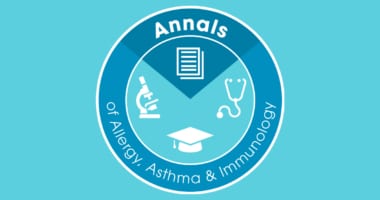 By now I hope everyone has received their copy of the May issue of the Annals of Allergy, Asthma and Immunology. This month’s emphasis is on environmental impact on allergy and asthma, and we have a wide array of articles that address many of the aspects of this topic. Two in particular are worthy of mention.
By now I hope everyone has received their copy of the May issue of the Annals of Allergy, Asthma and Immunology. This month’s emphasis is on environmental impact on allergy and asthma, and we have a wide array of articles that address many of the aspects of this topic. Two in particular are worthy of mention.
The first is a review by Brittany Esty, MD and Wanda Phipatanakul, MD, MS, FACAAI on considerations for the child with asthma in the school setting. They review the various exposures that are common in school settings including cockroach, rodent, pets, mold and higher endotoxin levels. These are all common exposures for children and, not surprisingly, are associated with adverse impact on students with asthma. The review is very thorough and thoughtful for providers counseling parents, teachers and students about possible environmental control measures in the overall management strategies for kids with asthma.
Another interesting article is this month’s CME review by David I. Bernstein, MD, FACAAI, and Anh Dao, MD, discussing many of the occupational related exposures that can adversely affect patients with asthma. They describe a detailed list of common exposures in different workplace settings. Additionally, they describe a comprehensive detailed occupational history intake template that can be extremely useful when a patient is suspected of having occupationally related asthma. The authors provide their expertise in context of a thorough literature review on the methods of discerning specific steps in establishing the proper diagnosis – not all that wheezes is asthma. Those steps include the true workplace connection, the value of allergy testing and approaches to management including modifying exposures in the workplace. This article should be extremely useful to the practicing clinician who suspects an occupational component to asthma.
As always, we welcome comments from you, the readers. Consider sending correspondence about the Annals features to share your thoughts with other readers in future issues. Instructions for this feature can be found at the submission website.
Gailen D. Marshall, Jr., MD PhD FACAAI
Editor-in-chief

